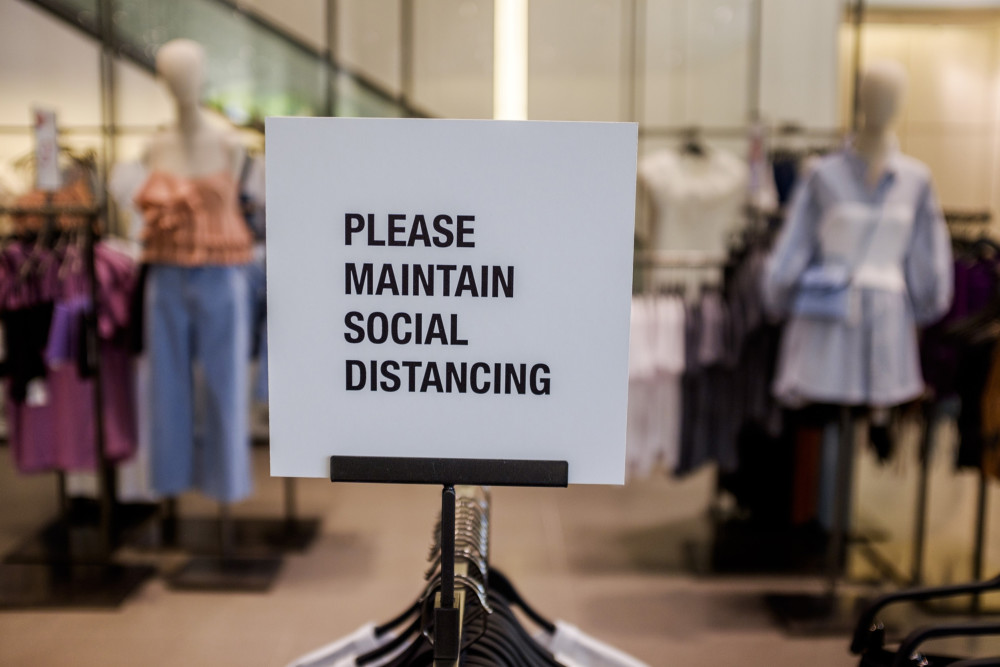By John Ewoldt
Star Tribune
WWR Article Summary (tl;dr) As one boutique owner put it, “We’re working five times harder for one-fifth of the sales we had before March.”
Star Tribune
Patina gift shops around the Twin Cities experienced record sales in January and February, making co-owner Christine Ward optimistic that 2020 would be an exceptional year for the 27-year-old retailer. She seriously considered opening two more stores.
Then COVID-19 burst that bubble.
“We’re working five times harder for one-fifth of the sales we had before March,” she said.
Patina is one of millions of small businesses struggling to climb out of the hole created by an unseen enemy. The U.S. has more than 30 million small businesses, defined as a firm with fewer than 500 employees. The number expected to close permanently in the next two months could be between 5 million and 7 million, according to estimates by the Federal Reserve and the U.S. Chamber of Commerce.
For Patina, which reopened Monday under state guidelines of safety, the timing couldn’t be worse.
The month of May is its second-biggest revenue month after December, with Mother’s Day and graduation gifts. The money made in May funds purchases made for the all-important holiday season, which makes up 35% of its total sales.
“Selling only one-fifth of what we normally sell in May leaves us with an abundance of inventory for the fourth quarter that may not be appropriate for the holiday shopper,” Ward said. “It’s very troubling. We can try everything possible or liquidate and close the business.”
Early last week, customer counts remained slow but steady. Online orders plus purchases made in the stores ticked up to about 35% of normal by midweek last week.
“We have to get back to 40 or 50% of expected sales to consider staying open after May and we’re not there yet,” Ward said. “The clock is definitely ticking for us.”
Some optimism crept in as the week progressed. Sales from the open stores added 5% to 10% revenue. Ward began to think the business may be sustainable if sales continued to creep up.
“We need to pivot quickly based on customers’ new needs,” she said. “Right now they’re responding to cards, notecards and puzzles. We’re getting more hopeful.”
Part of keeping tabs on customers’ wants includes finding ways to make stores look fresh and new. That’s more challenging at a time when the merchandise that filled the stores in early March for Easter and Mother’s Day sold sparsely after the closing.
“We can store the Easter product, but that’s unrealized revenue and we’re not used to that,” she said.
With slower sales, businesses can’t afford to buy new merchandise. If a retailer can’t offer new merchandise every time that shoppers, especially regulars, come in, they may shop less often or go elsewhere. Retailers such as Patina remake store displays every week to surprise customers, but with hundreds of orders canceled to save money, it will have to find other ways to add an element of surprise.
The number of customers making their way into the store so far has been modest, but that has allowed Ward and the staff to ensure safety. Before the pandemic, the retailer with $19 million in sales last year had 45 full-time and 105 part-time employees. About 80% of those staffers have been rehired to qualify for a six-figure Payment Protection Program loan.
“I was worried that some customers might not take it seriously since there’s a mix of consumer behavior out there, but it’s been fine so far,” said Abby Grosse, an employee at Patina for two years. “On the first day it’s been a slow, steady trickle with less than a dozen customers by midafternoon.”
In a pandemic, modest numbers can also be a boon, as customers feel safer in a place that is not as congested as stores selling liquor, groceries and hardware.
Emily Vener of Minneapolis had one prerequisite before she went into Patina on Monday to shop for a teacher-appreciation gift and birthday gift.
“If the precautions are there, I’m OK shopping in public,” she said. “I’m glad to see Patina wants its customers and employees to wear masks. They did a great job of putting their precautions on social media and their website.”
The owners spent about $10,000 to make their eight locations as safe as possible. Plexiglass shields at the checkouts took more than half that amount with hand sanitizer stations, face coverings, thermometers, gloves and face shields making up the rest. Just trying to source the sanitary supplies and have them arrive in time took extra time and resources.
The whole experience since the state mandated closure left Ward and her husband and co-owner, Rick Haase, numb until they realized they had to spring into action or lose the business.
The couple talked late last year of reintroducing their website, but the virus made it a must-do if they wanted to add curbside pickup and shipping. With a shift toward exclusive goods not found elsewhere online, they felt more confident.
“Since we weren’t going head to head with Amazon anymore, maybe we could carve out a space of our own,” Ward said. Many items they’ve tailored to their customers, such as custom mugs embossed with the words “Say it, don’t spray it,” a wink to the virus craziness.
“As entrepreneurs, we’re used to being in control, whether it’s canceled orders, lease negotiations or a snowstorm, but this is totally out of our control,” Ward said. “To not re-enter the market was a difficult pill to swallow so we reopened. Now we’ll let the customer decide, ‘Are we still relevant?’?”
___
Distributed by Tribune Content Agency, LLC.














































































































































































































































































































































































